Review by Pete Vack
All images from the book
Jean Bugatti 1929-1939 The prodigious decade by François Vanaret
Language: French / English
30 x 24 cm, 300 pages
500 hardbound copies, couverture cartonnée
illustrations : 40 full-page reproductions of paintings and 350 photos
$135 postpaid in US from Don Toms Bookseller
Artist François Vanaret has combined his stunning art with a well-researched history that encompasses the Jean Bugatti-inspired cars built from the La Royale in 1929 to the last T57 built in 1939.
Vanaret includes his own art to illustrate many of the Bugattis of the 1930s, in addition to period black and white photos and current color images, to present the influences and/or designs of Jean Bugatti, who was born in 1909.
After a brief introduction which sets the scene, Vanaret dives right into the conception of the Royale, perhaps the first Bugatti that the 20 year old Jean directly influenced, while also noting that Jean was definitely responsible for the design of the Type 40 Coupe Lydia, created for his sister Lydia.
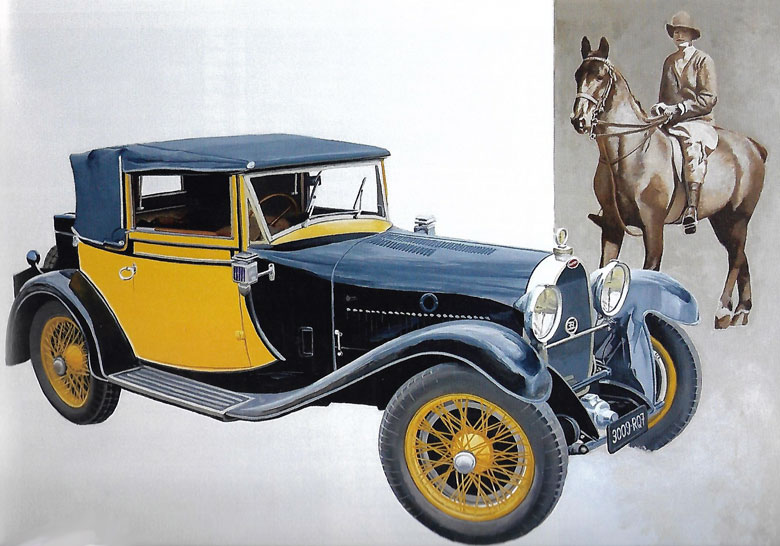
From the smallest T40 to the largest T41, the Royale, Jean Bugatti had an input. Here is the Vanaret renderng of the Lydia T40.
Clearly, very early on, Jean Bugatti was involved in the appearance of Bugatti cars. His influence would grow, particularly after 1936, when Ettore left the factory for an office in Paris, leaving Jean almost totally in charge. However, there is little in the way of actual documentation regarding what and when Jean Bugatti’s activities were…although Vanaret did find and publish a drawing of the Bugatti Le Mans Tank actually signed off by Jean, indicating his approval of the drawing.
Never formally trained as an engineer, artist or draftsman, Jean obviously inherited a sense of style, line, color, and an ability to convince others to accept his ideas, usually much fresher and modern than those of his father. On the drawing board was Joseph Walter, who was hired in …and stayed until 1961. Walters was Jean’s right hand man and able to translate ideas into blueprints.
It might seem that perhaps Jean liked to take credit for the Royale roadster, the Type 57s and the Atalante and Atlantic coupes, but there is no evidence that he hogged credit. Despite arguments with his father over hydraulic brakes, independent suspension, and engine advancements, Jean was the fair-haired son, the anointed heir. However, Jean’s abilities soon became part of the legend, and needed no prompting from the protagonist.
Written in both French and English, Vanaret’s text goes into significant detail about both the Royales and the T57 Atlantics by chassis number, discussing Jean’s input, ideas, art and even a bit about his love life. Unfortunately Ettore did not approve of his girlfriend Riva Reyes, a Mexican dancer, and Jean never married.
For the Bugatti firm, the 1930s was a decade of both turbulence and change. It was the contracts for the French railcar that saved the company. While Ettore was busy with the railcar project, (Jean test drove the first one) the Type 50 was to be the first of a new line of road cars, and the first use of the Miller inspired DOHC engine. That experience no doubt gave Jean the experience and confidence to go forward with what would be his masterpiece, the Type 57 series.
As he does with the Royale, Vanaret covers the Aeros and Atlantics by serial number in great detail, again with the latest information and recreations and restorations. The book’s organization is somewhat confusing, overlaying the models with years. He covers the first three Atlantics in one chapter and then waits for a later chapter to discuss the last Atlantic, breaking the train of thought.
When it comes to the rest of the T57s, the descriptions are by model and year, as there are far too many to illustrate by chassis number. But the cars selected by the author remind us of the often brilliant designs among the lesser more mundane coupes and sedans that made up the Ventoux, Galibier, Aravis, and Stelvio offerings of the late 1930s. When they are good, they are the best!
We liked the book, and it accomplishes its goal, to provide a better understanding of the cars of Jean Bugatti via Vanaret’s art, photos and text. Somewhat annoying is the lack of consistent page number, no table of contents, no index, no source credits or footnotes.
Although there is very little new here, it transforms the way we look at the development of Bugattis in the 1930s and the contributions of Ettore’s eldest son.
However, the definitive biography of Jean Bugatti has yet to be written.
Best way to buy:
Don Toms Classic Books
don@bugattibooks.com
941-727-8667
In Europe, you can find it here
https://www.descarrossesalauto.com/livres?store-page=La-decennie-prodigieuse-Jean-Bugatti-1929-1939-p646640501
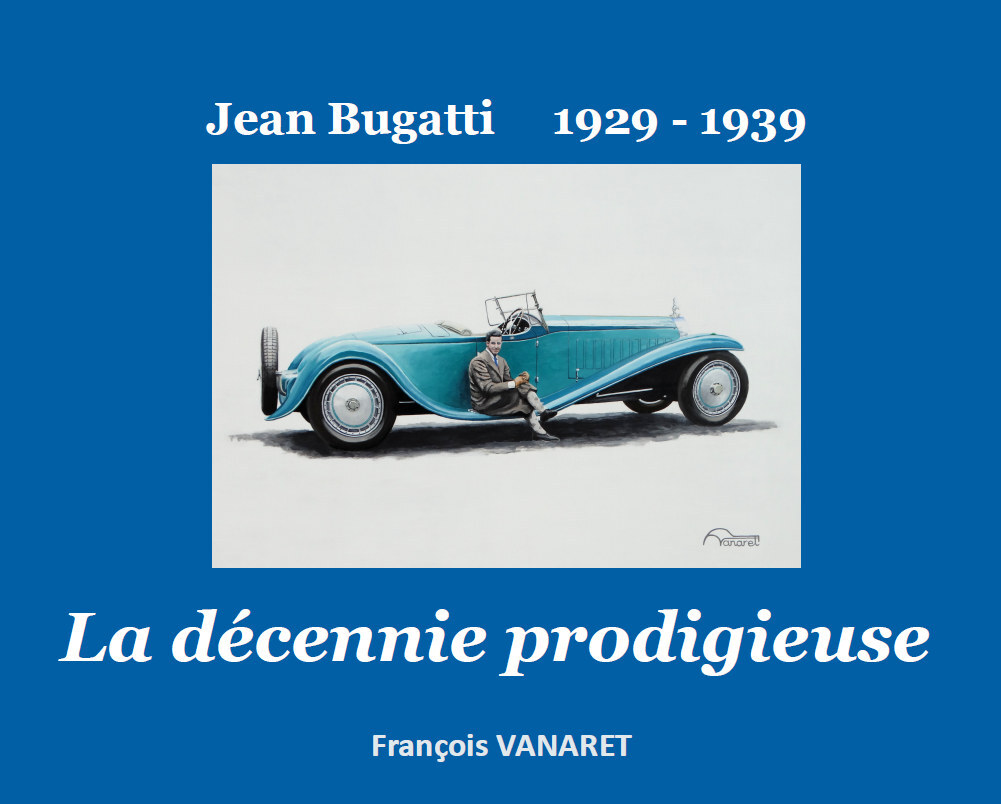
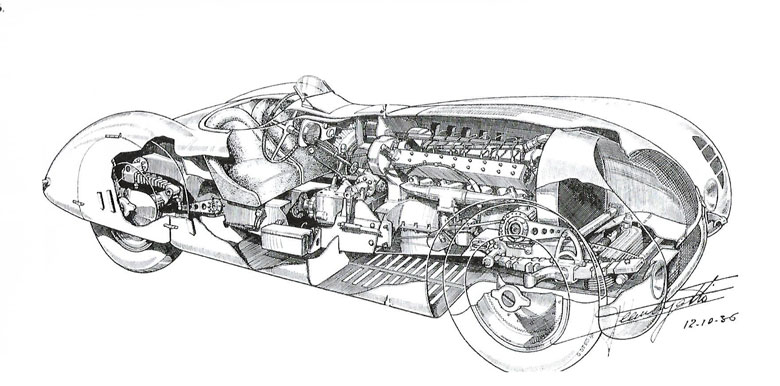

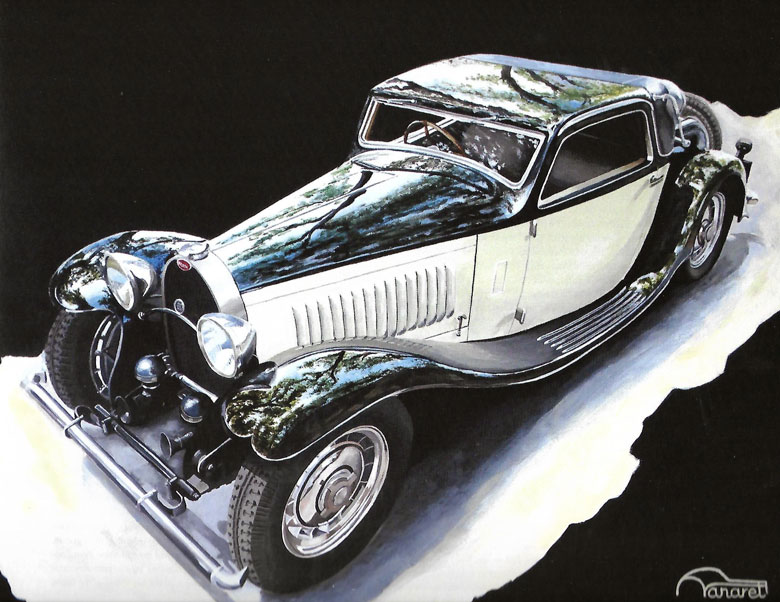
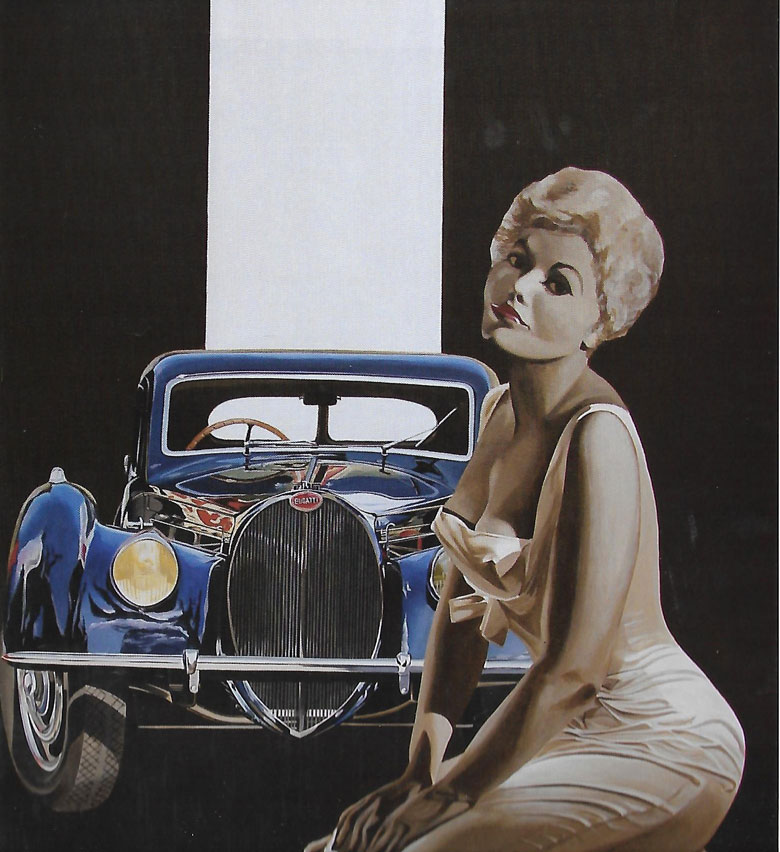
I bought the book from Don and immediately read it. Quite an enjoyable read.
May I suggest you take a look at “Die Jean Bugatti Story – Eine Dokumentation” by Horst Schultz. He knows a bit about his subject, as the founder and director of the Autovision Museum close to the Hockenheim race track. (www.museum-autovision.de) At the museum he has initiated and participated in the restauration or recreation of 12 important Bugattis. And what he presents in the book is not tainted by the old myths in the traditional Bradley/l’Ebé Bugatti myths that have been repeated for decades – here you’ll find a lot of original material. You will also find one of the better Bugatti literature lists